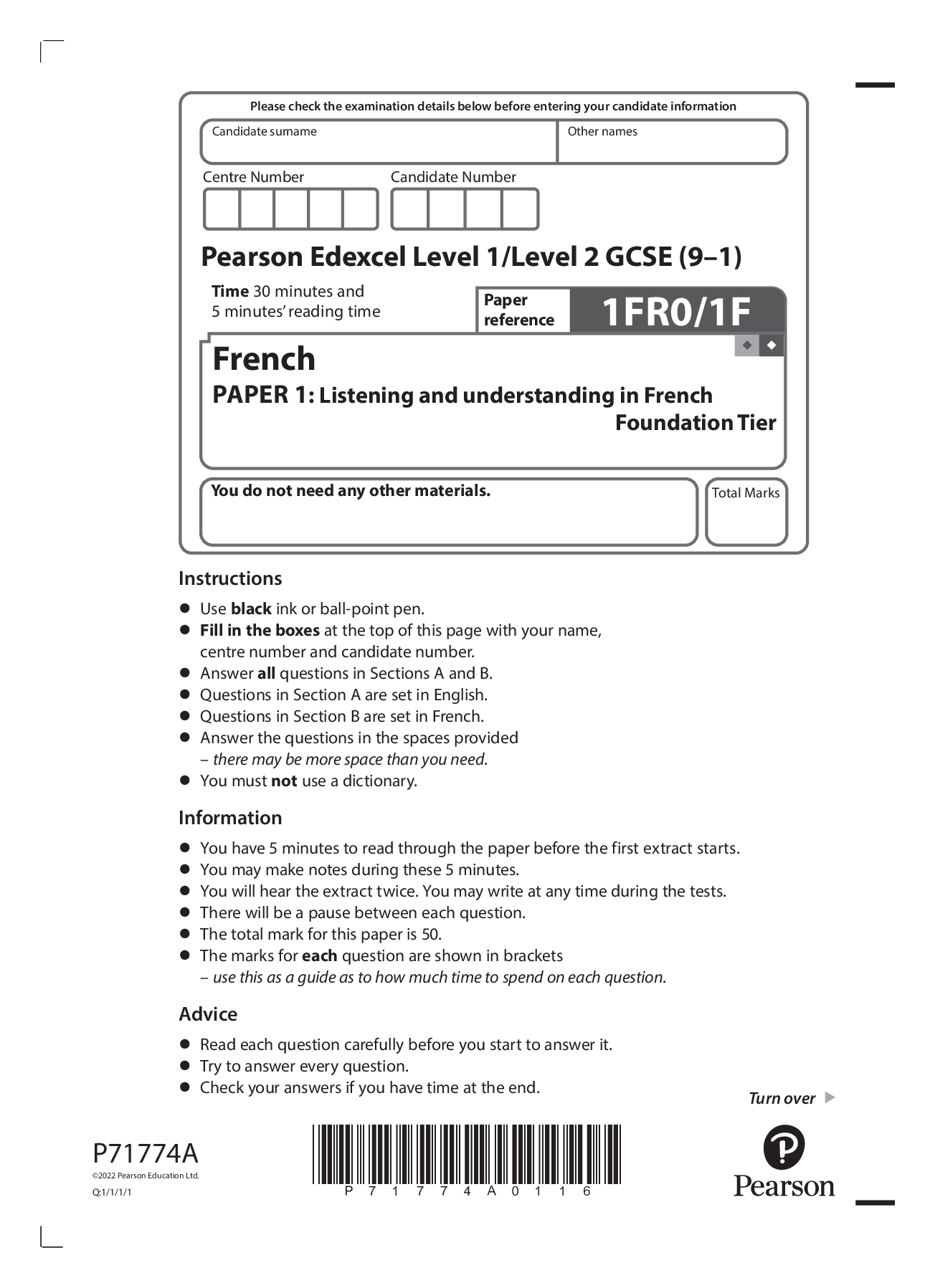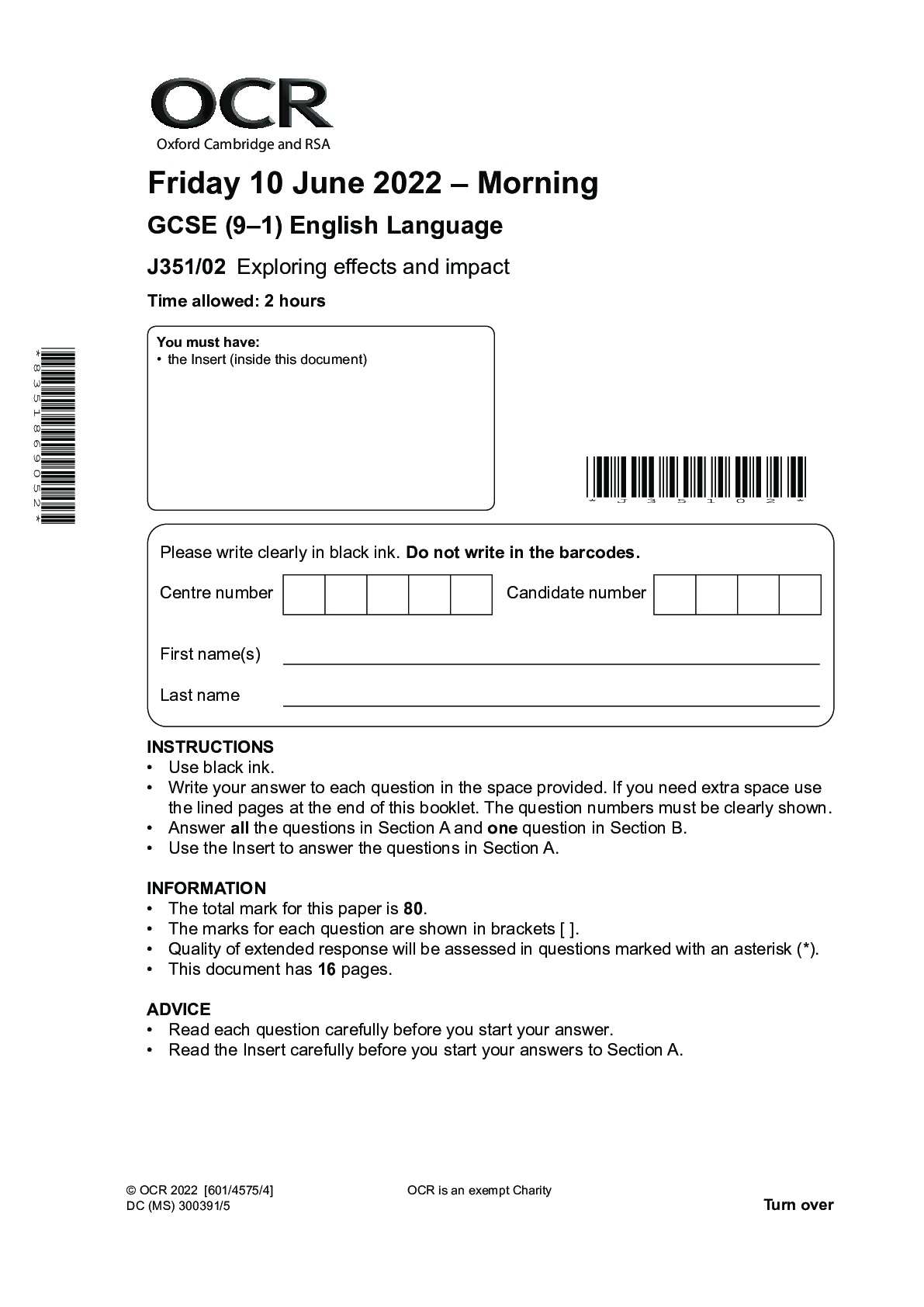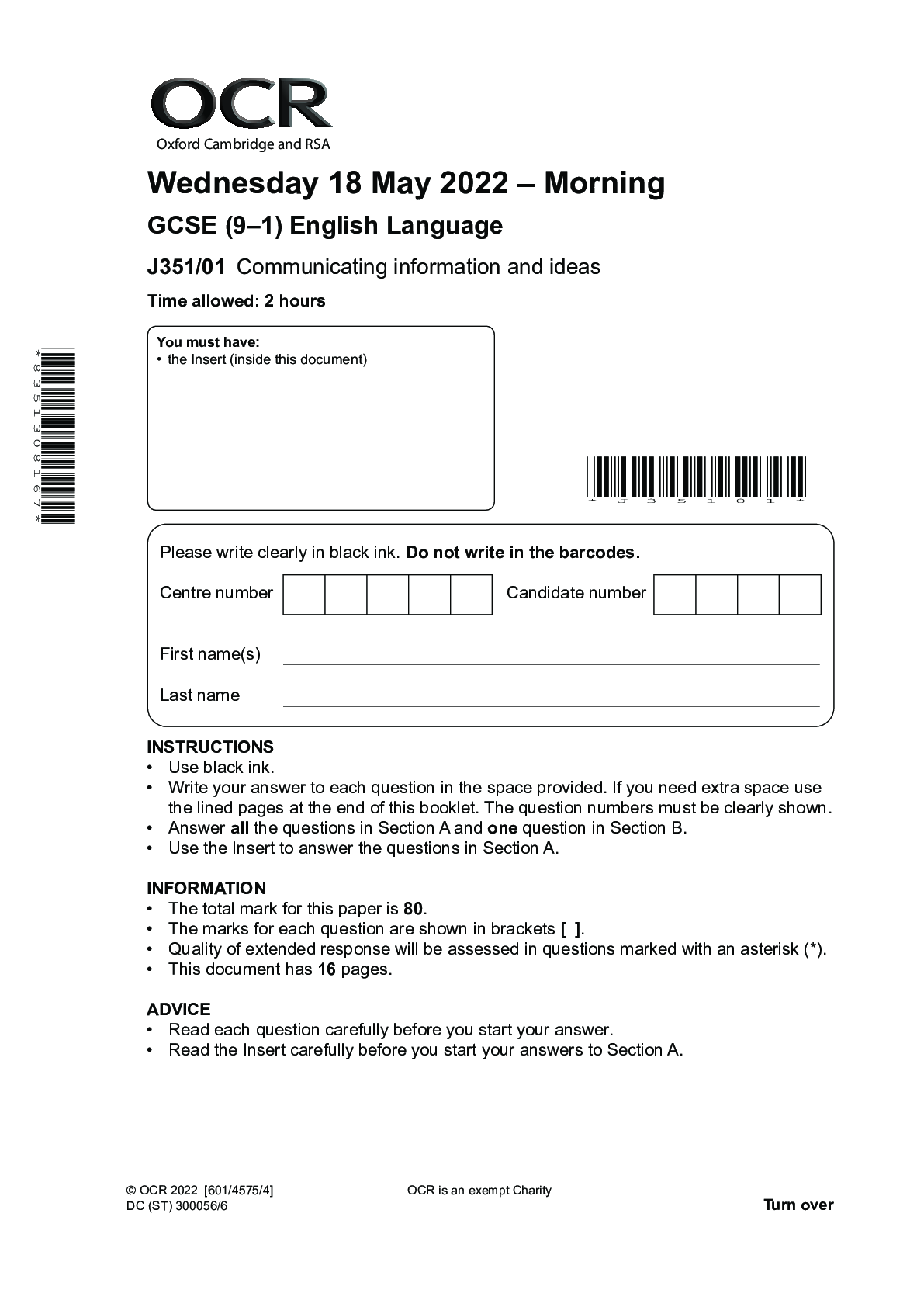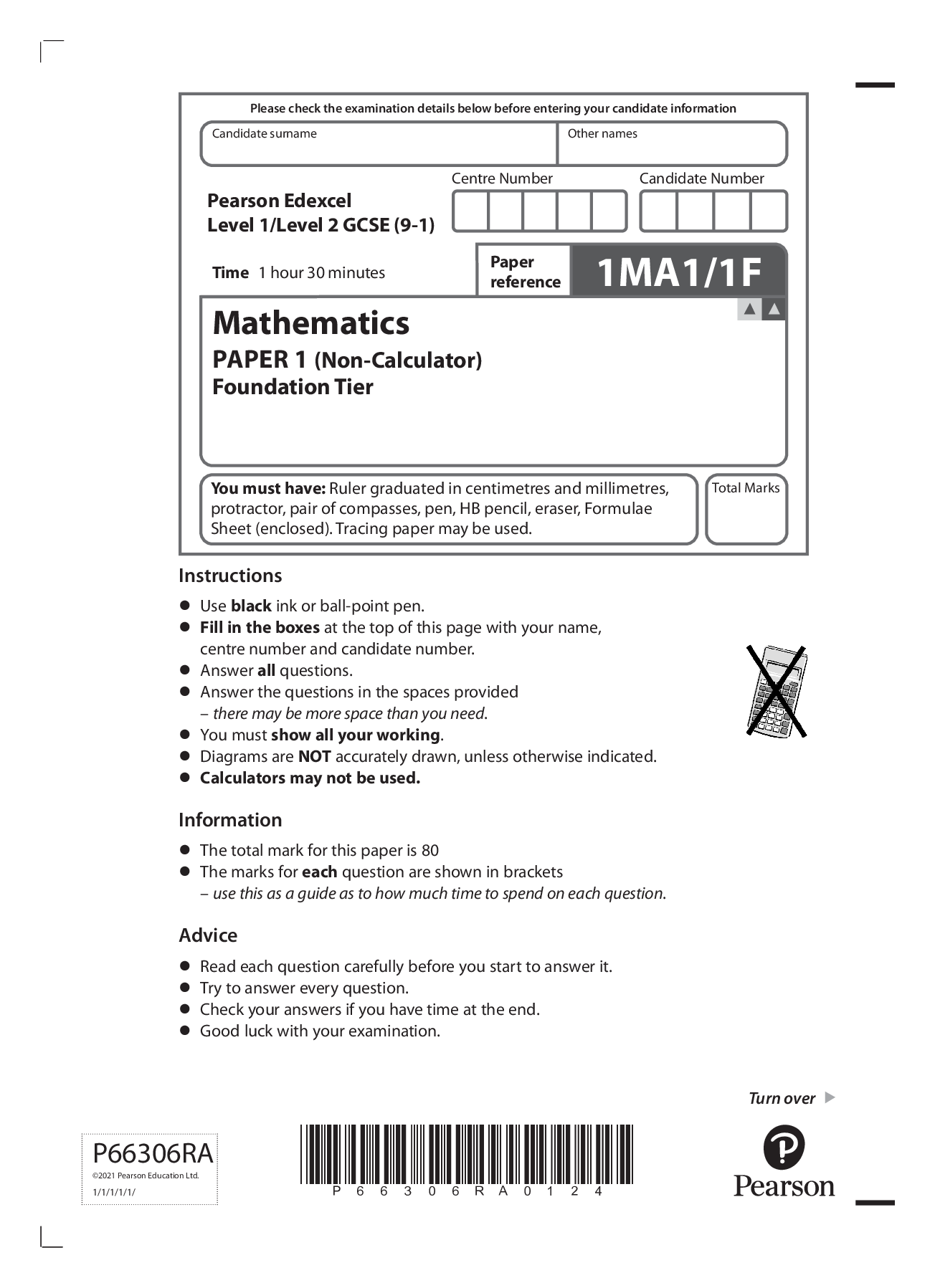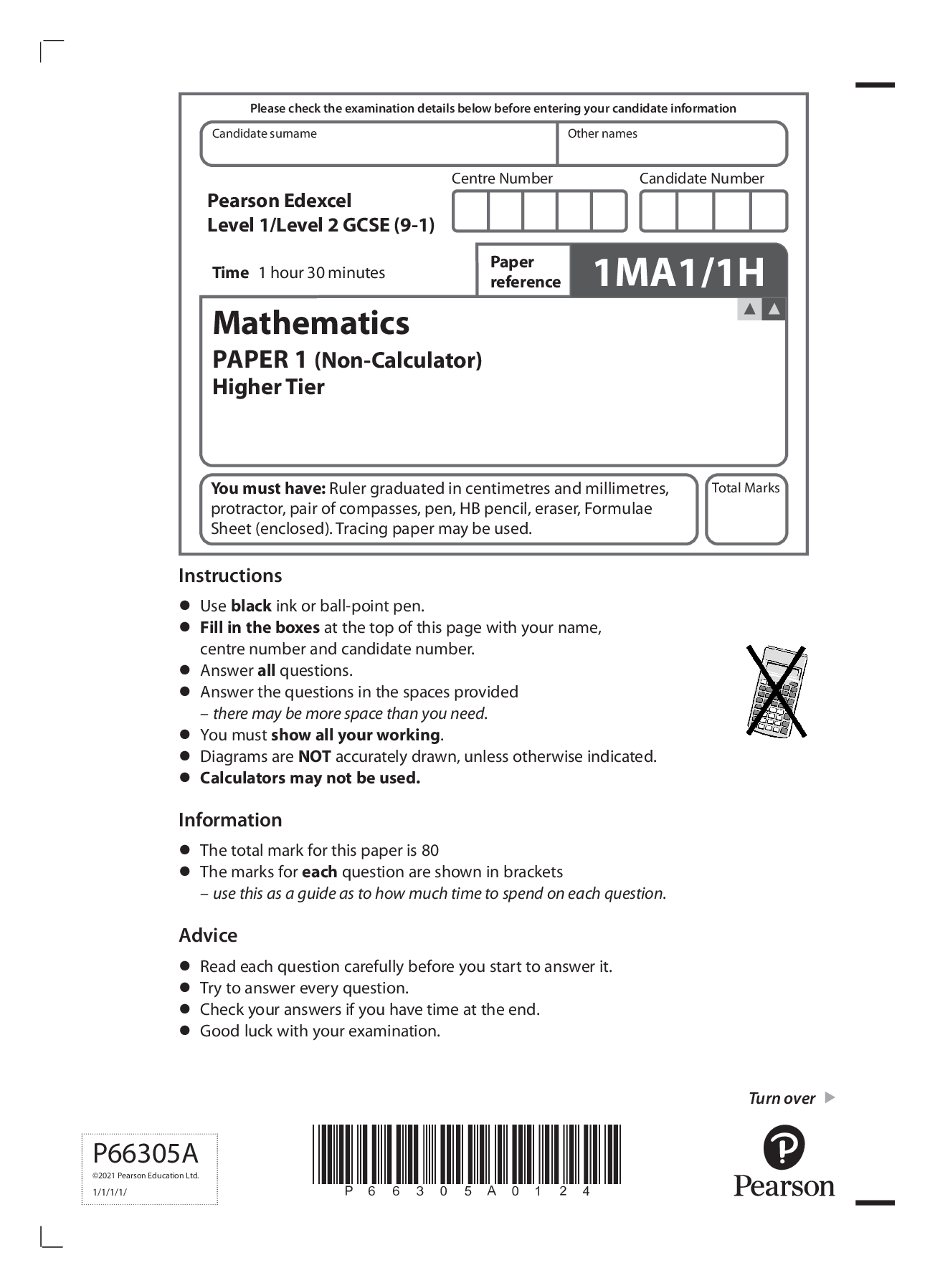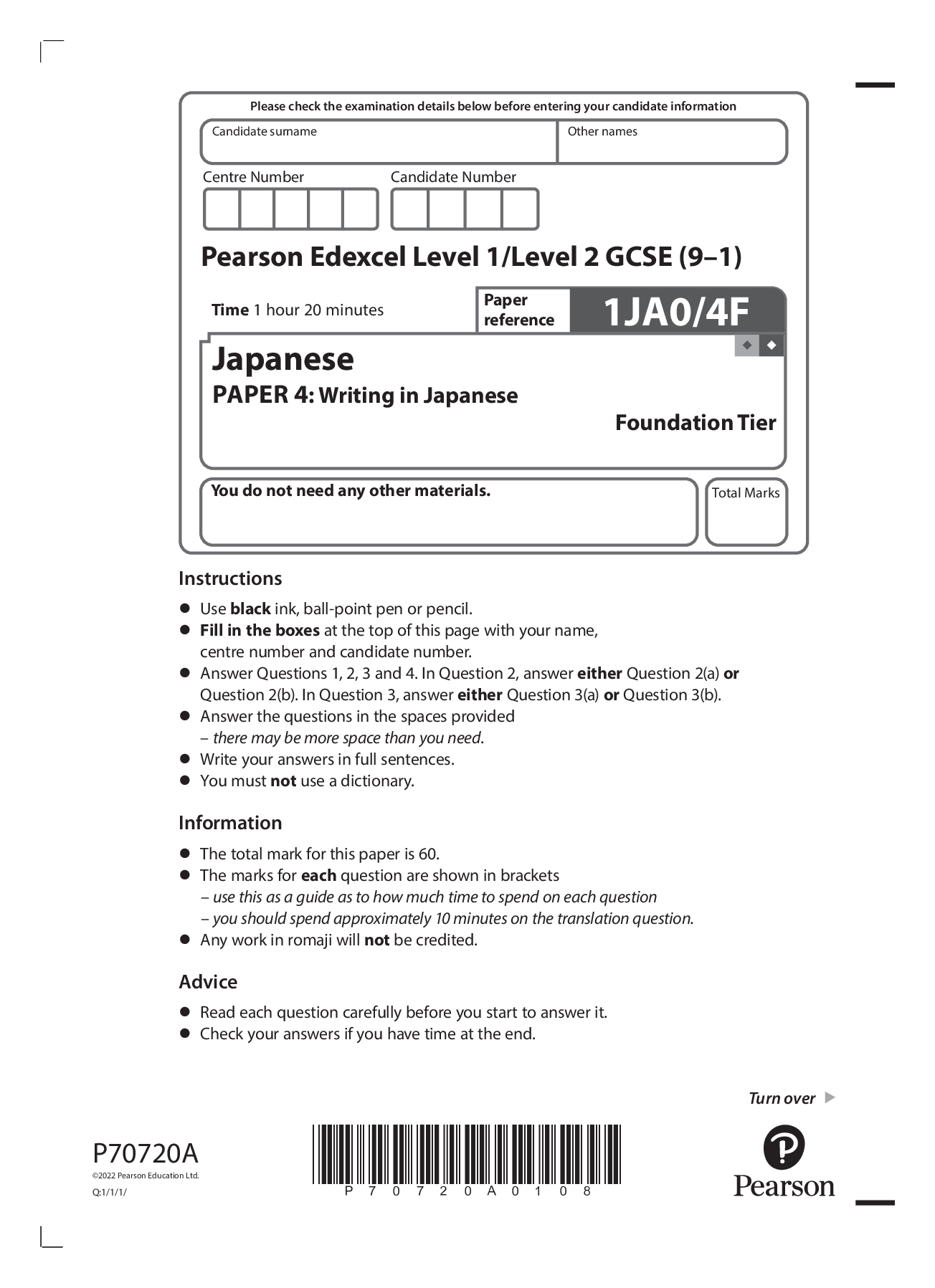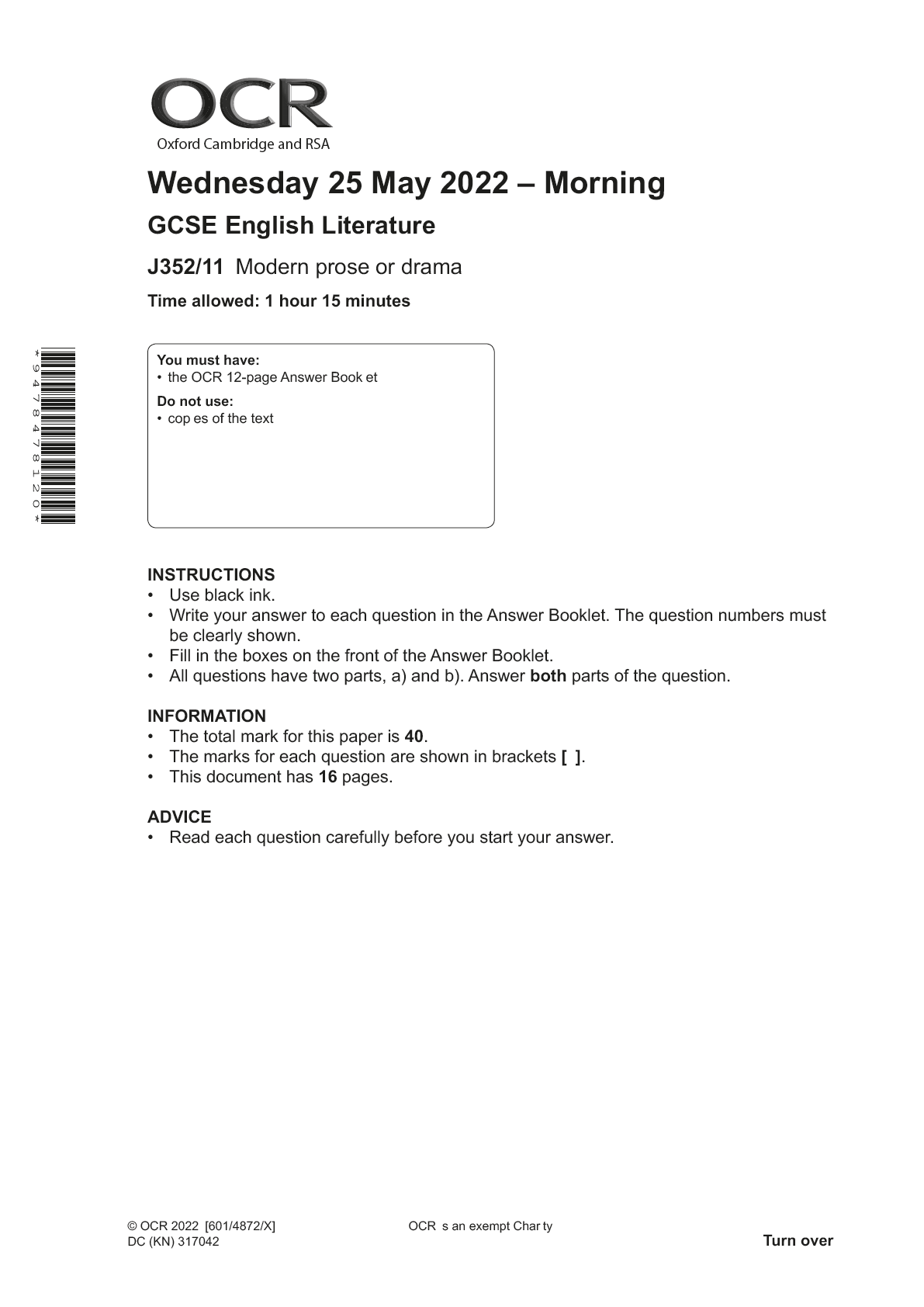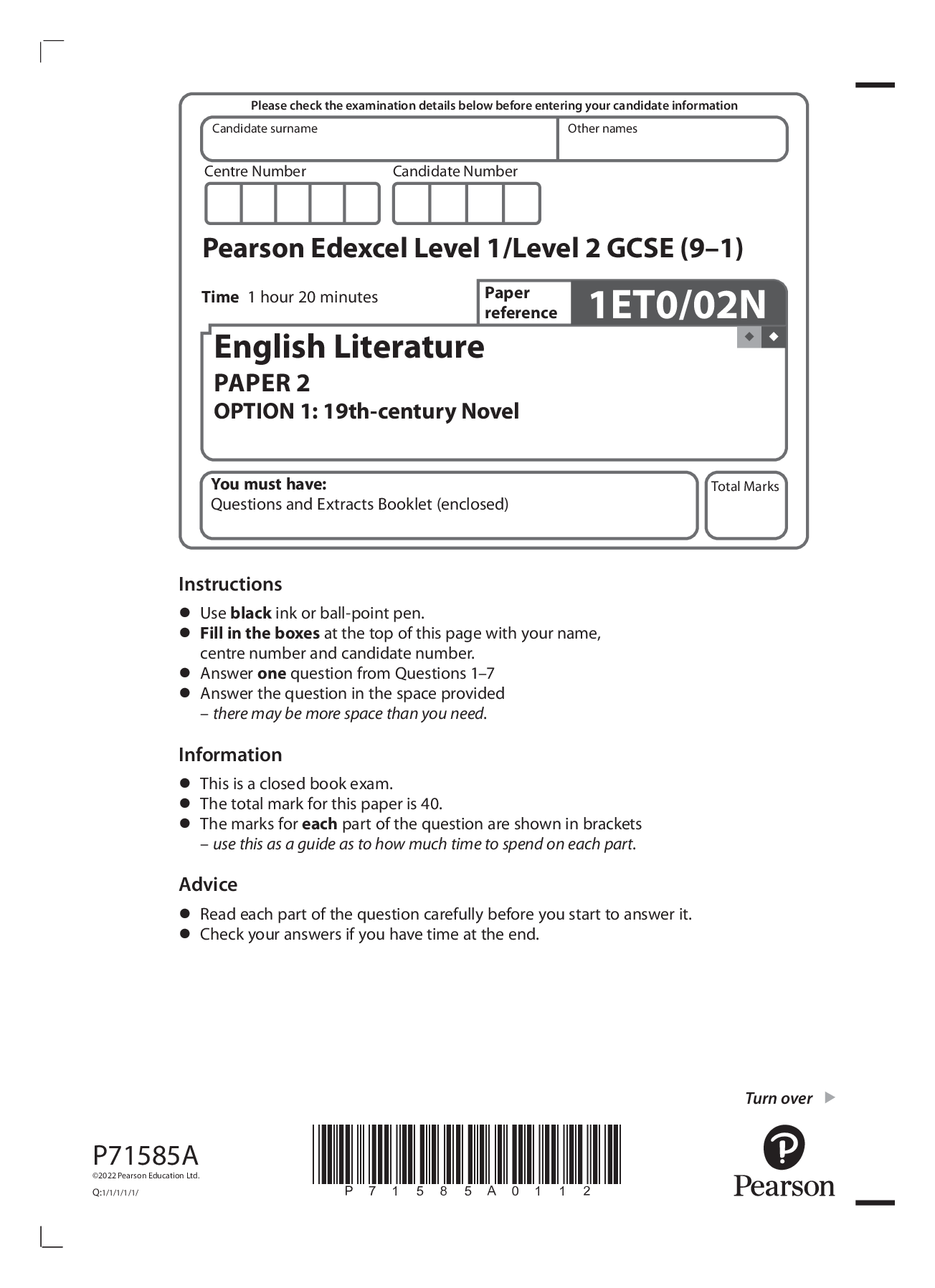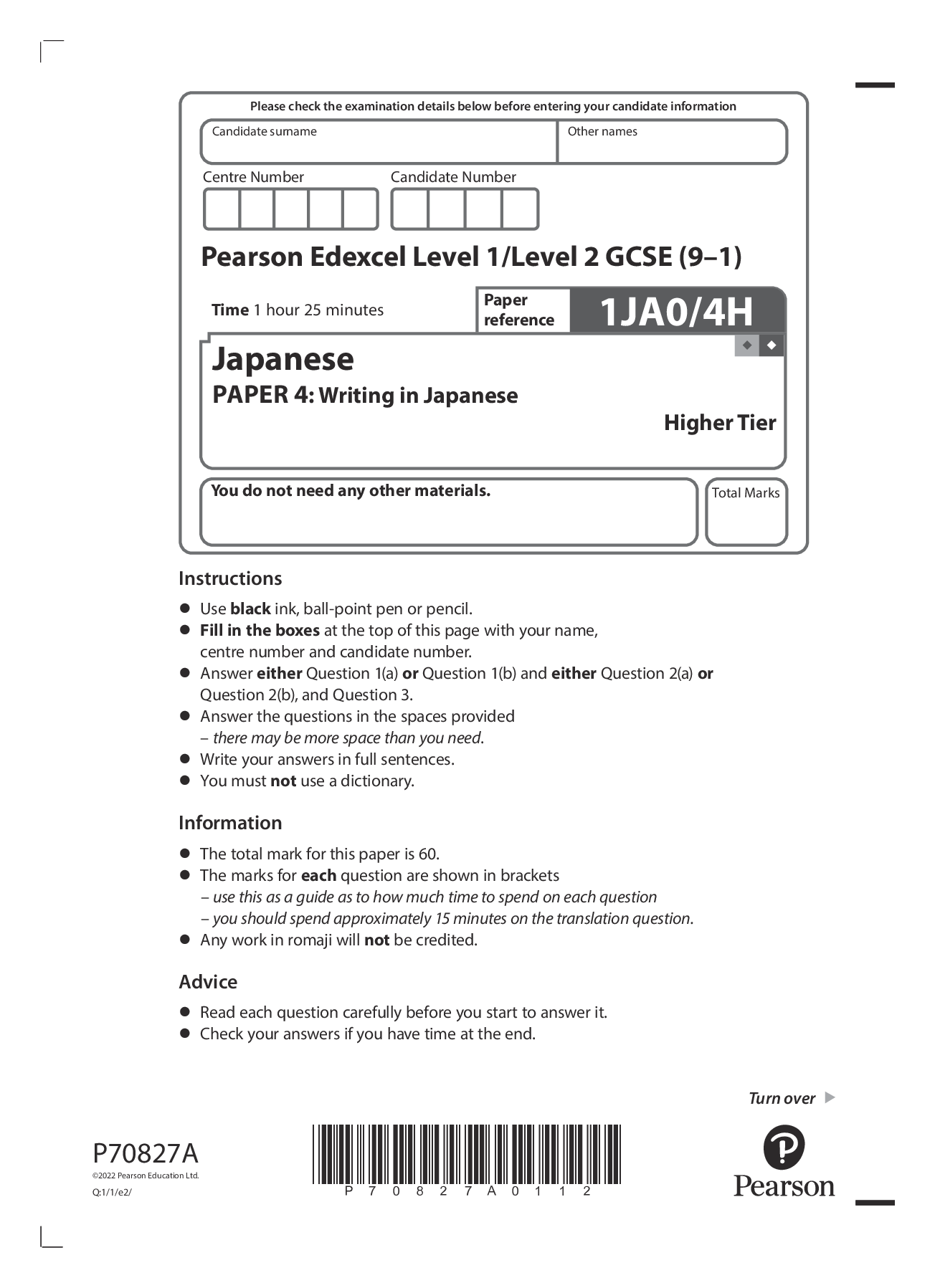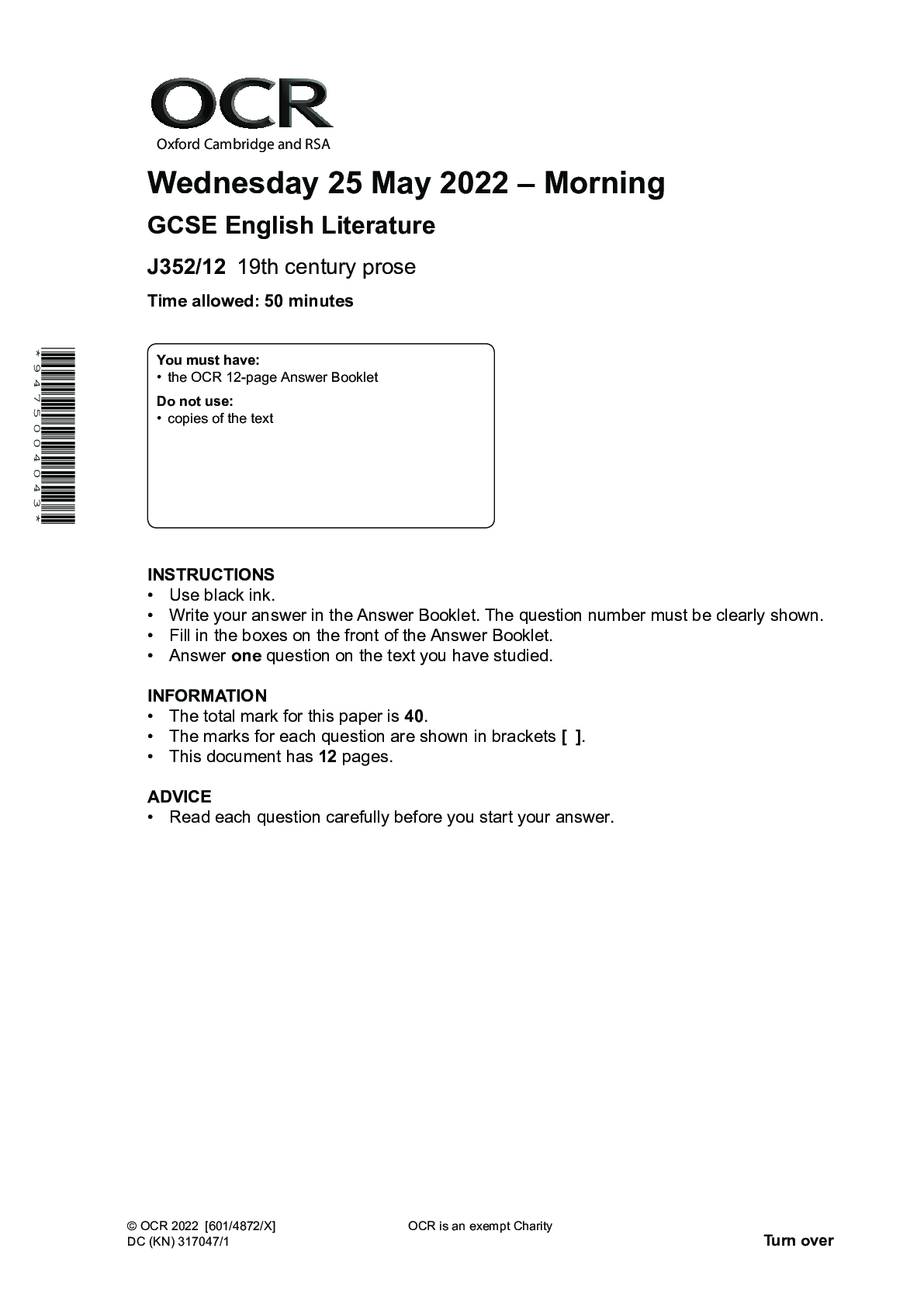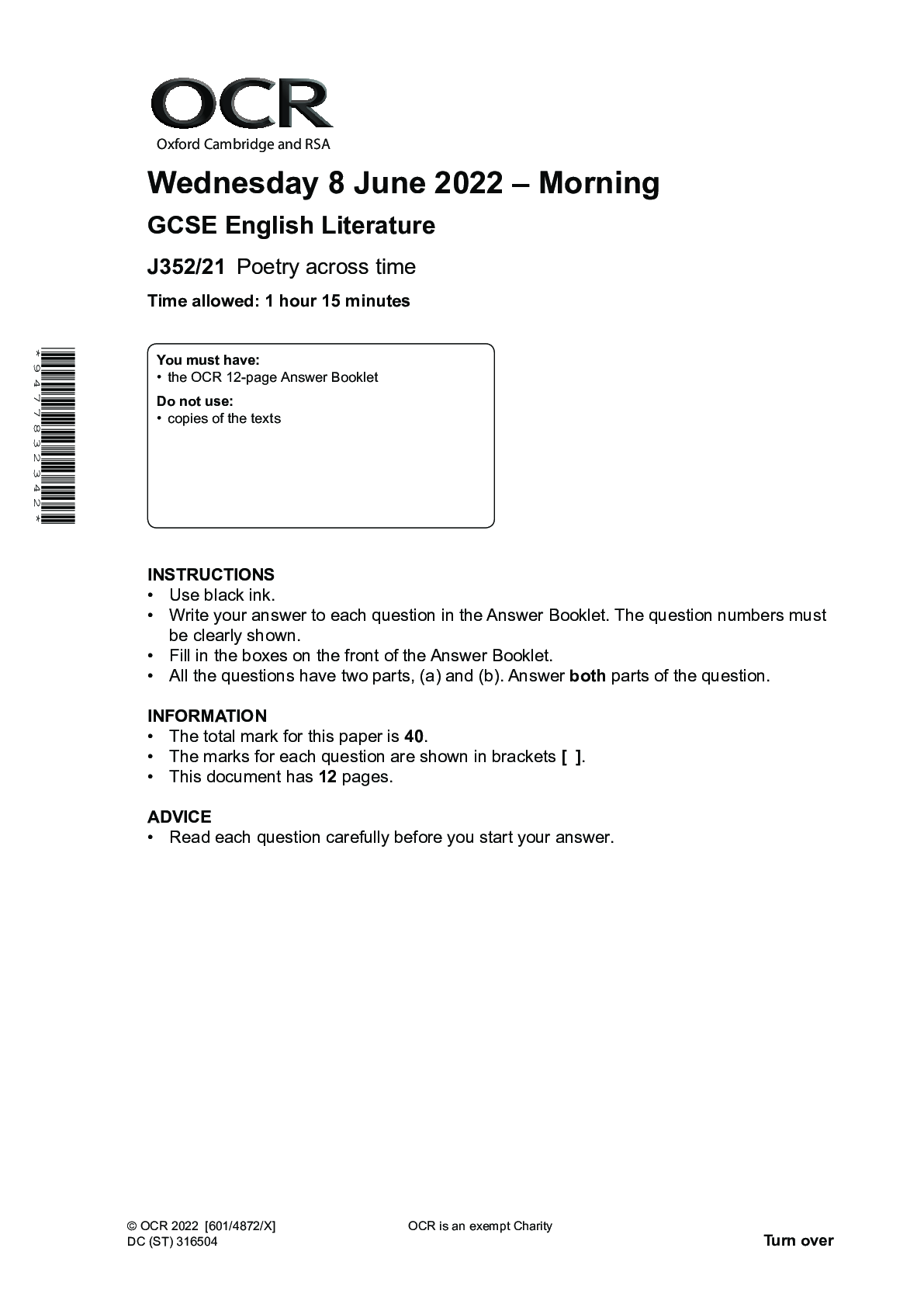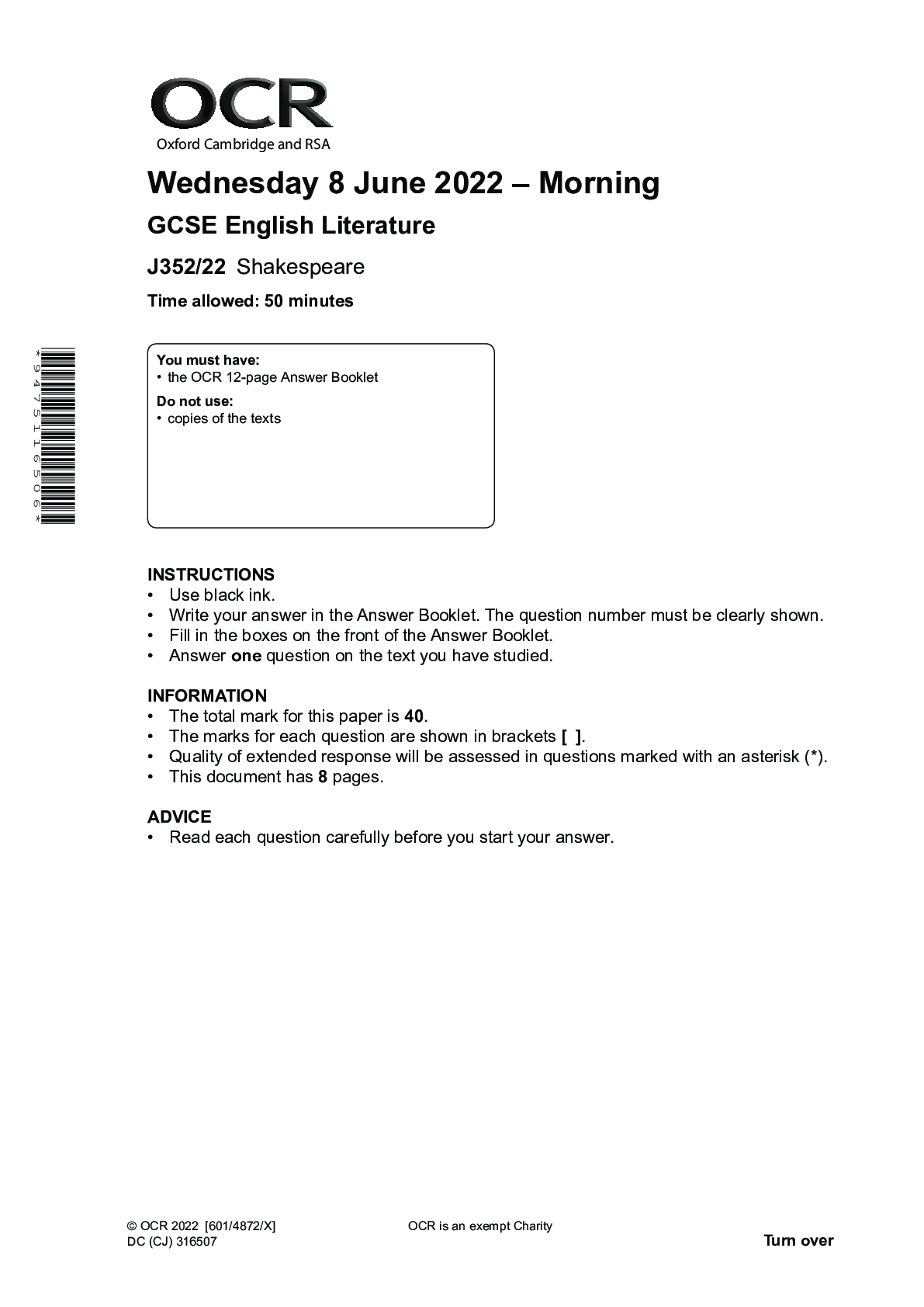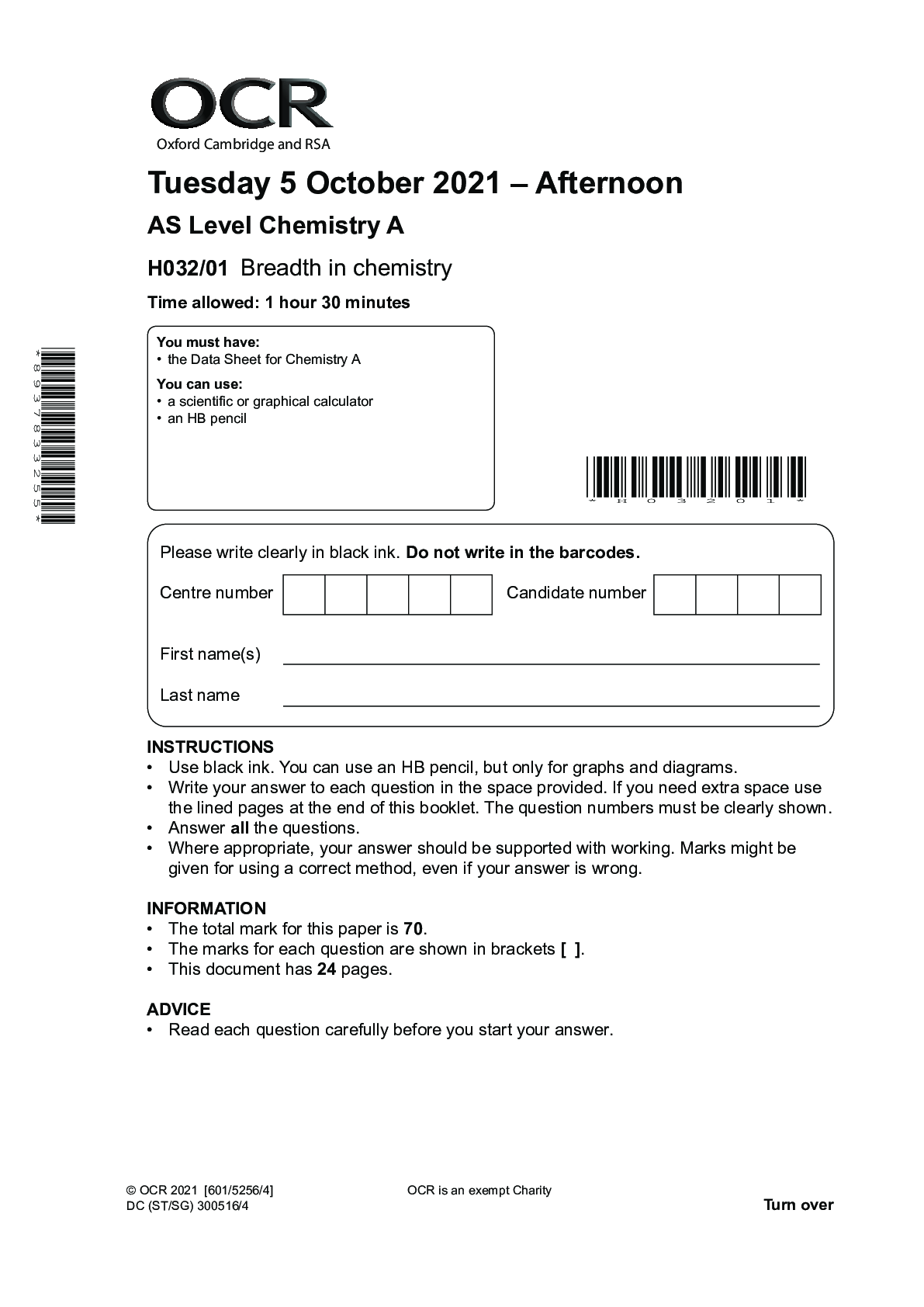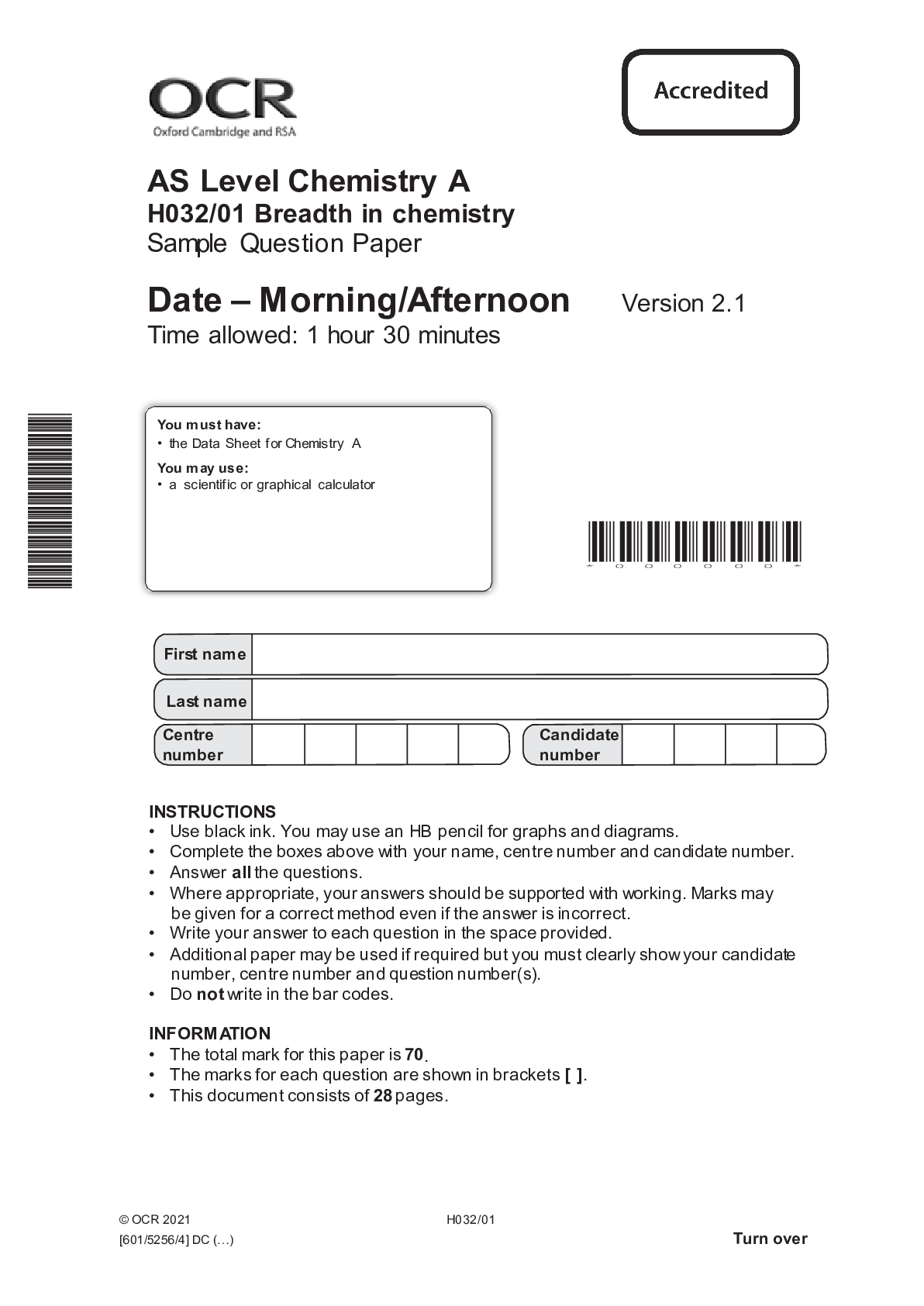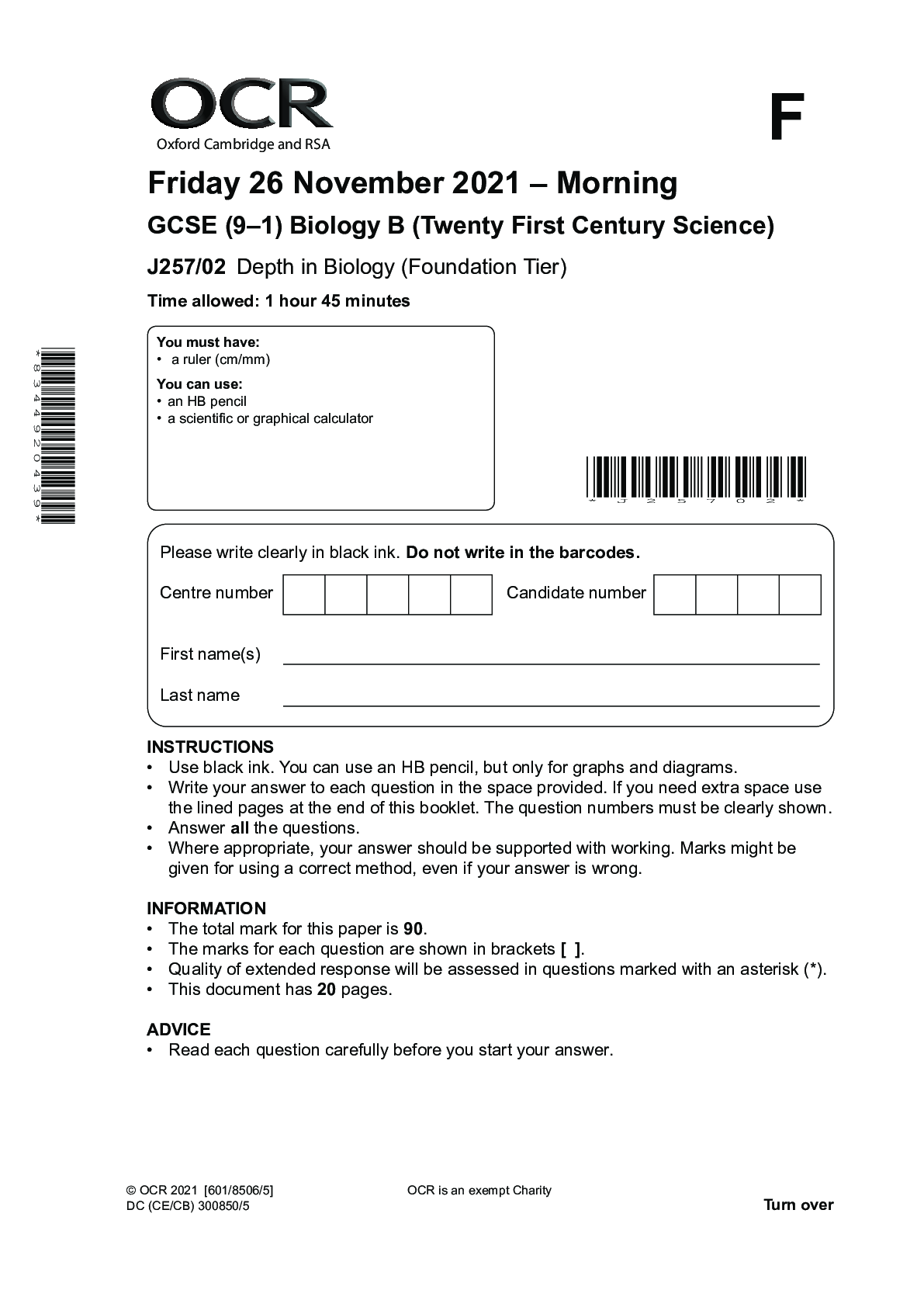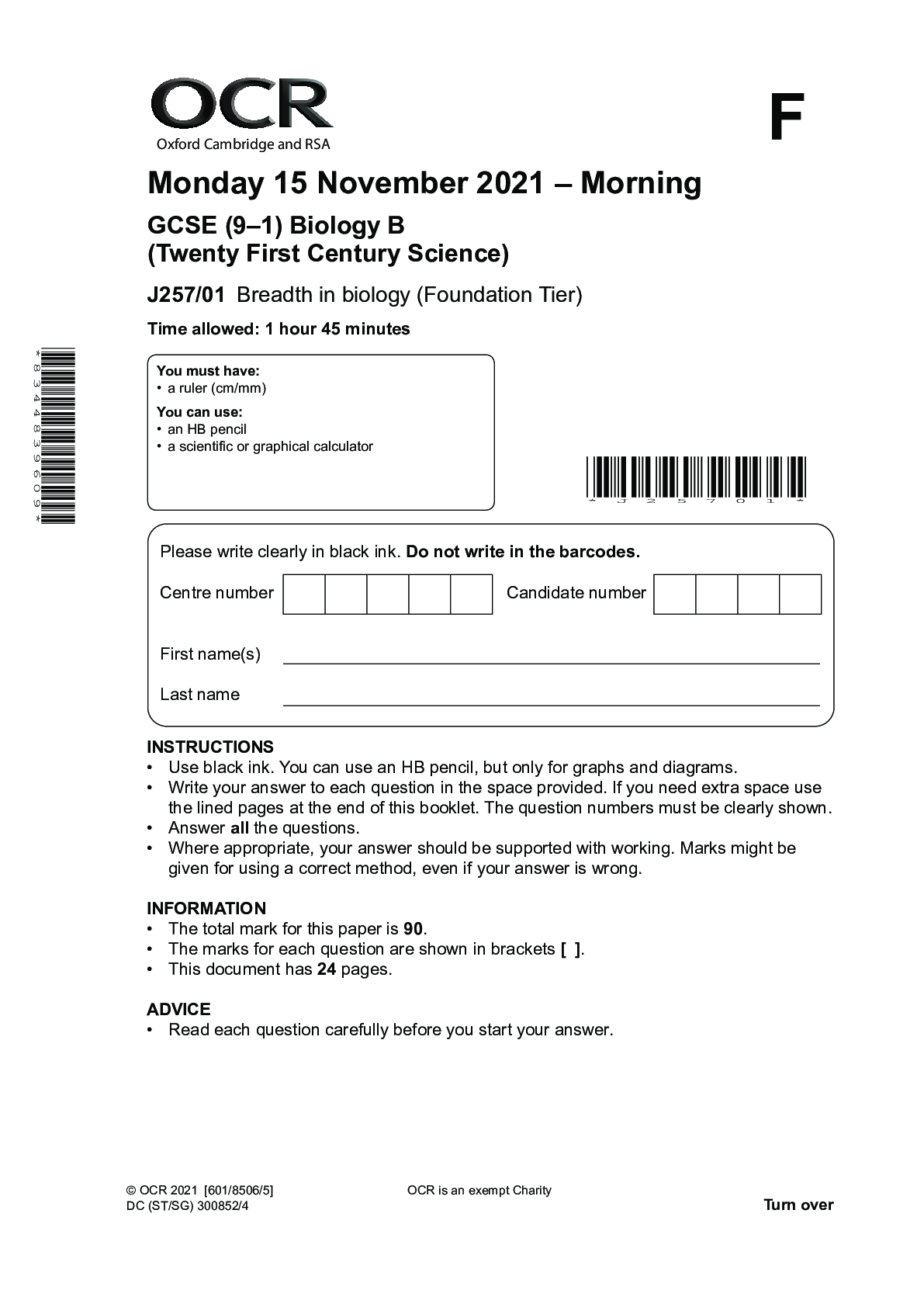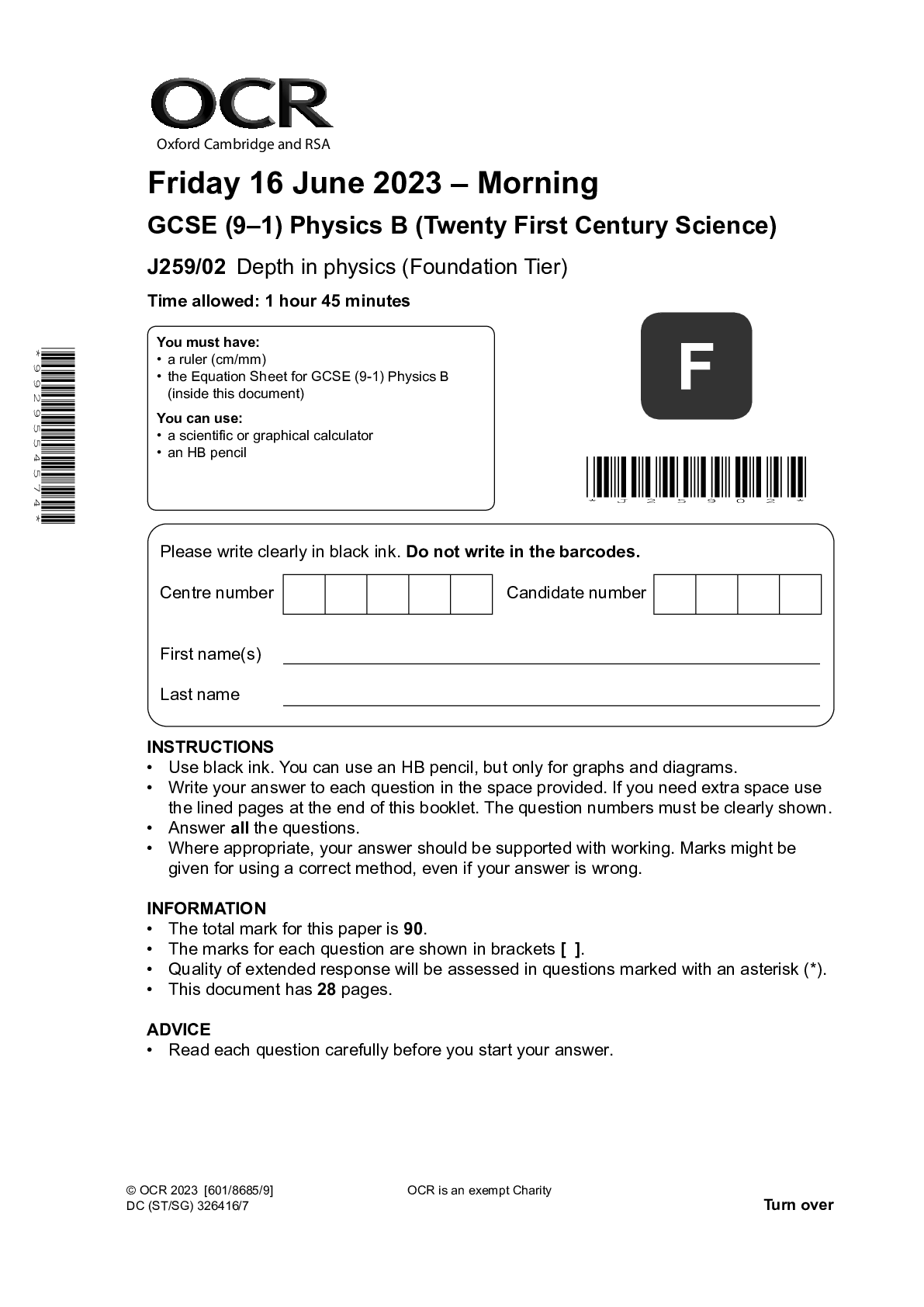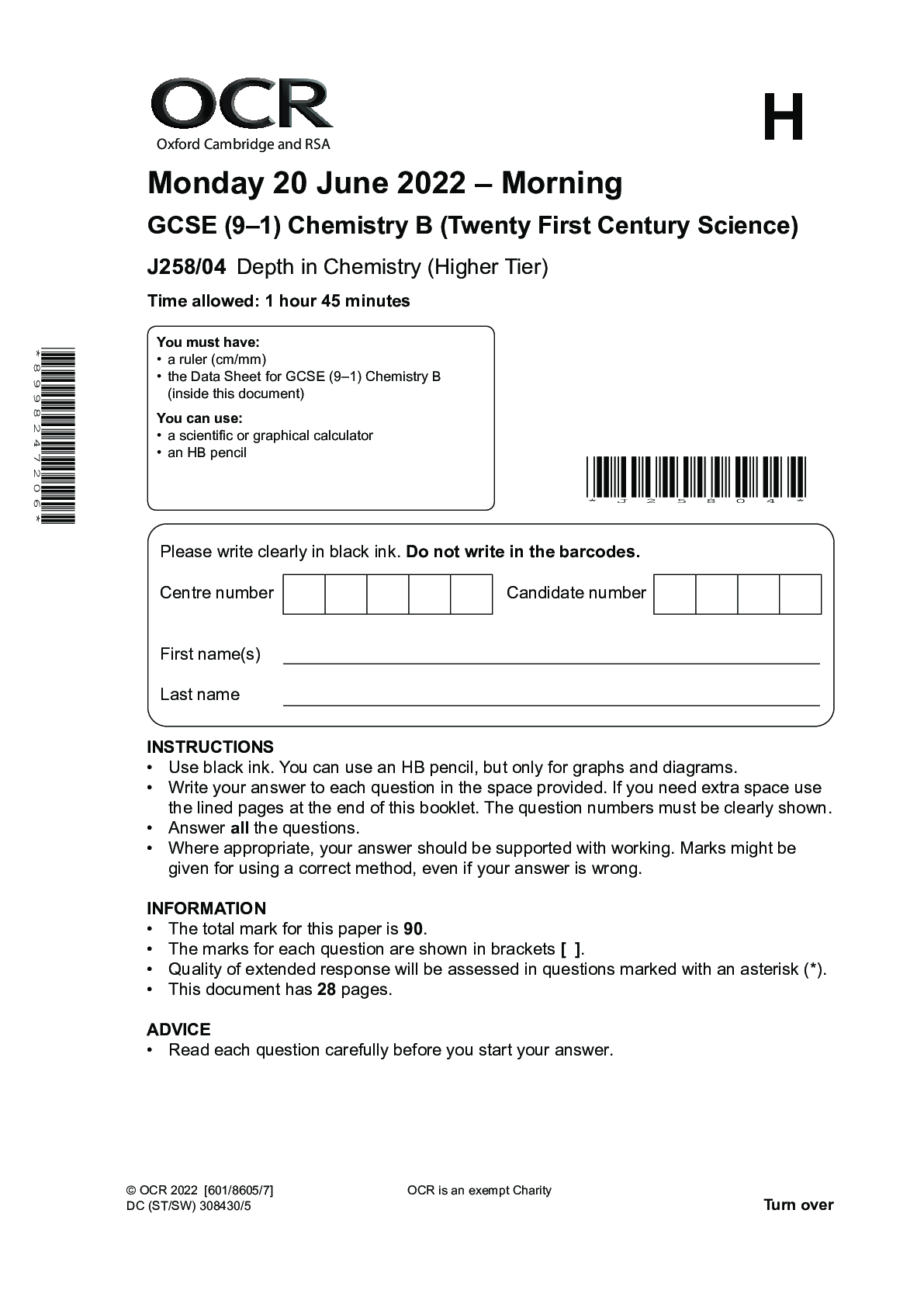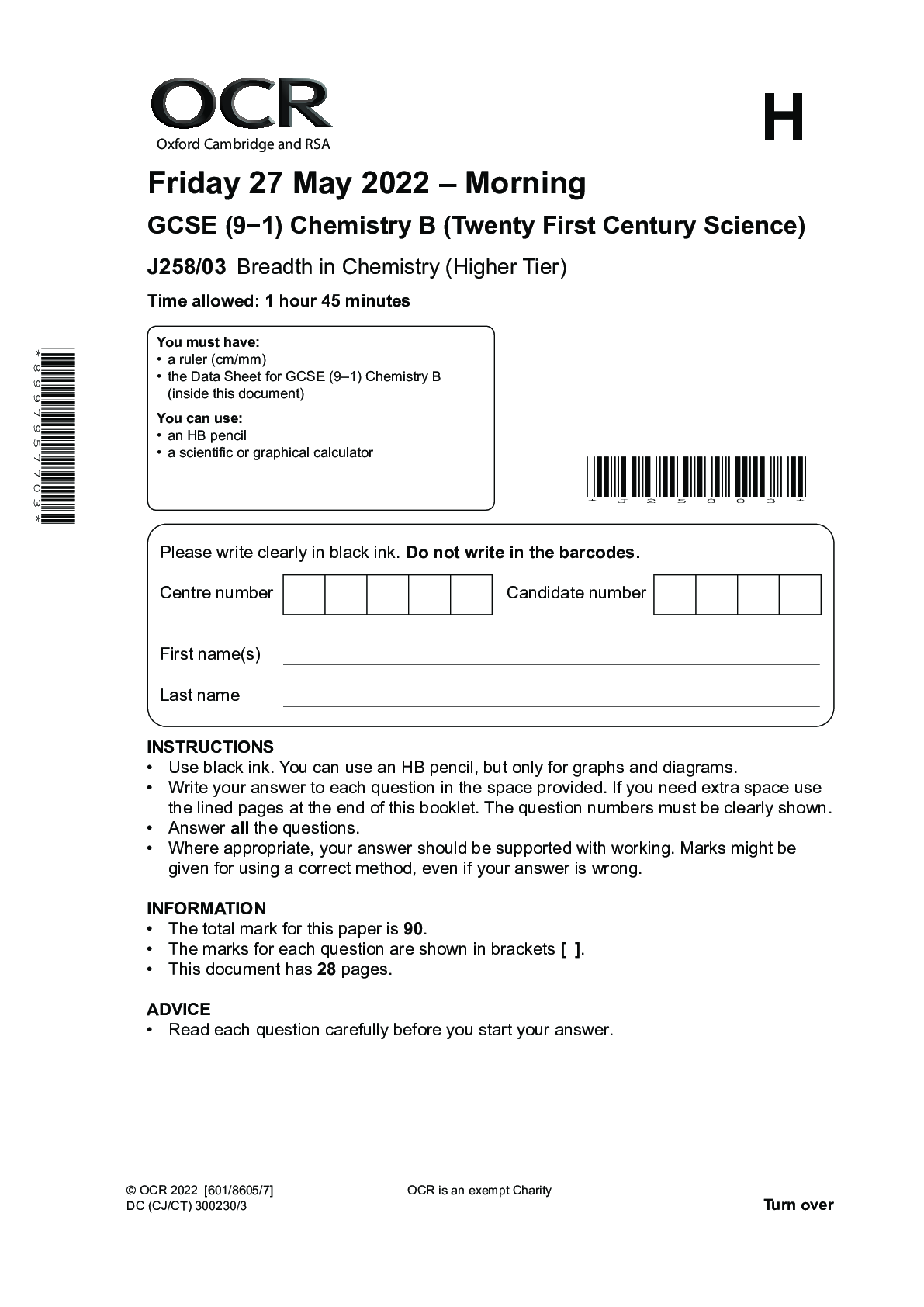Chemistry > QUESTION PAPER (QP) > OCR Oxford Cambridge and RSA Friday 27 May 2022 - Morning GCSE (9—1) Chemistry B (Twenty First Cen (All)
OCR Oxford Cambridge and RSA Friday 27 May 2022 - Morning GCSE (9—1) Chemistry B (Twenty First Century Science) J258/01 Breadth in Chemistry (Foundation Tier) Time allowed: 1 hour 45 minutes
Document Content and Description Below
INSTRUCTIONS • Use black ink. You can use an HB pencil, but only for graphs and diagrams. • Write your answer to each question in the space provided. If you need extra space use the lined page... s at the end of this booklet. The question numbers must be clearly shown. • Answer all the questions. • Where appropriate, your answer should be supported with working. Marks might be given for using a correct method, even if your answer is wrong. INFORMATION • The total mark for this paper is 90. • The marks for each question are shown in brackets [ ]. • This document has 28 pages. ADVICE • Read each question carefully before you start your answer. You must have: • a ruler (cm/mm) • the Data Sheet for GCSE (9–1) Chemistry B (inside this document) You can use: • an HB pencil • a scientific or graphical calculator *J25801* Friday 27 May 2022 – Morning GCSE (9−1) Chemistry B (Twenty First Century Science) J258/01 Breadth in Chemistry (Foundation Tier) Time allowed: 1 hour 45 minutes *8997574896* © OCR 2022 [601/8605/7] DC (CJ/JG) 300229/5 2 © OCR 2022 Answer all the questions. 1 Earth’s early atmosphere contained mostly carbon dioxide and water vapour. (a) As the Earth cooled, water vapour turned to liquid water and the oceans formed. Complete the sentence to explain why the oceans formed. Put a ring around the correct answer. The oceans formed because the water vapour boiled / condensed / evaporated / froze. [1] (b) Gradually, plants began to grow on the Earth. Complete the sentences to describe how an oxygen-rich atmosphere has developed over time. Use words from the list. carbon dioxide combustion methane nitrogen photosynthesis Plants make oxygen in a process called ................................................ . This process uses a gas called ............................................................. . [2] 3 © OCR 2022 Turn over (c) The graph shows how the percentage of carbon dioxide in the atmosphere has changed over time. Millions of years ago Percentage of carbon dioxide (%) 450 400 350 300 250 200 150 100 50 0 0.0 0.2 0.4 0.6 0.8 (i) Describe how the percentage of carbon dioxide in the atmosphere has changed over the last 300 million years. Use data from the graph in your answer. ........................................................................................................................................... ........................................................................................................................................... ........................................................................................................................................... ..................................................................................................................................... [2] (ii) State the percentage of carbon dioxide in the atmosphere 200 million years ago. Percentage = .................................................... % [1] (iii) 400 million years ago there was 0.28% carbon dioxide in the atmosphere. Today there is 0.04%. Calculate how many times more carbon dioxide there was 400 million years ago compared with today. There was ....................... times more carbon dioxide 400 million years ago. [1] 4 © OCR 2022 2 (a) Complete the sentence to describe how Mendeleev placed elements in the Periodic Table. Use words from the list. atomic colour molecular properties size Mendeleev organised the elements based on their ....................................... and their relative .......................... masses. [2] (b) Table 2.1 shows the properties of some elements. Name Atomic number Melting point (°C) Appearance Electrical conductivity Lithium 3 181 shiny when cut good Boron 5 2076 black poor Magnesium 12 650 shiny good Phosphorus 15 44 white/yellow poor Table 2.1 (i) Which two elements in Table 2.1 are metals? ............................................................ and ................................................................ [1] (ii) Which column in Table 2.1 did you use to work out your answer to (b)(i)? ..................................................................................................................................... [1] (iii) The elements in Table 2.1 are all solids at room temperature (25 °C). How does the data in the table show that this is true? ........................................................................................................................................... ..................................................................................................................................... [1] (iv) What does atomic number tell you about the nucleus of an atom? ........................................................................................................................................... ..................................................................................................................................... [1] 5 © OCR 2022 Turn over (c) Iodine and chlorine are halogens in Group 17 (Group 7). (i) Draw lines to connect each halogen with its correct appearance at room temperature (25 °C). Halogen Appearance Grey solid Chlorine Purple gas Iodine Green gas Brown liquid [2] (ii) Sodium iodide solution reacts with chlorine. Complete the word equation for this reaction. sodium iodide + chlorine iodine + ............................................. [1] 6 © OCR 2022 3 ‘Cool packs’ containing ammonium nitrate are used to treat sports injuries. (a) Ammonium nitrate absorbs energy when it dissolves in water. The temperature of the water falls. (i) Which energy level diagram shows the energy change when ammonium nitrate dissolves in water? Tick (✓) one box. Energy ammonium nitrate + water Progress Energy ammonium nitrate + water Progress Energy ammonium nitrate + water Progress [1] 7 © OCR 2022 Turn over (ii) Which label should be used for the product of the dissolving process? Tick (✓) one box. Ammonium nitrate liquid Ammonium nitrate solution Ammonium nitrate solvent [1] (iii) Which word describes this dissolving process? Tick (✓) one box. Decomposition Endothermic Exothermic Precipitation [1] (b) Eve has some solid ammonium nitrate. Describe the experiment Eve can do to find out how far the temperature of the water falls when solid ammonium nitrate dissolves in water. ................................................................................................................................................... ................................................................................................................................................... ................................................................................................................................................... ................................................................................................................................................... ............................................................................................................................................. [3] 8 © OCR 2022 4 Crude oil contains many alkanes. The table shows some of these alkanes: Alkane Formula Relative formula mass Boiling point (°C) Heptane C7H16 100 98 Octane C8H18 114 126 Decane C10H22 142 174 Undecane C11H24 156 196 (a) The graph shows how boiling point changes with relative formula mass for three of the alkanes. 80 80 100 120 140 160 180 200 220 90 100 110 120 130 140 150 160 Boiling point (°C) × × × Relative formula mass of the alkane (i) Plot the point for decane on the graph. [1] (ii) Draw a line of best fit. [1] 9 © OCR 2022 Turn over (iii) The relative formula mass of C9H20 is 128. Use the graph to estimate the boiling point of C9H20. Boiling point of C9H20 = .................................................... °C [1] (b) (i) The general formula of alkanes is CnH2n+2. Pentane has five carbon atoms. State the formula of pentane. ..................................................................................................................................... [1] (ii) Complete the word equation for the reaction when pentane burns completely in oxygen. pentane + oxygen carbon dioxide + ................................ [1] (c) (i) What is the simplest ratio of carbon atoms to hydrogen atoms in ethane (C2H6)? Simplest ratio of carbon atoms : hydrogen atoms = ................. : ................. [1] (ii) State the empirical formula of ethane (C2H6). Empirical formula ......................................................... [1] (d) Complete the sentences to describe C–C bonds. Use words from the list. covalent given ionic shared C–C bonds are ................................. . The electrons between the carbon atoms are ................................. . [2] (e) Ethanol, C2H5OH can be made from crude oil. Why is the OH group in ethanol called the functional group? Tick (✓) one box. It contains an oxygen atom. It is at one end of the molecule. It contains a covalent bond. It gives ethanol its chemical properties [Show More]
Last updated: 1 year ago
Preview 1 out of 28 pages

Reviews( 0 )
Document information
Connected school, study & course
About the document
Uploaded On
Apr 03, 2023
Number of pages
28
Written in
Additional information
This document has been written for:
Uploaded
Apr 03, 2023
Downloads
0
Views
78

